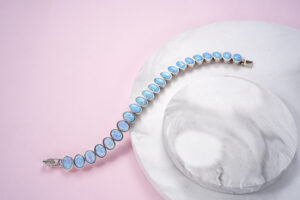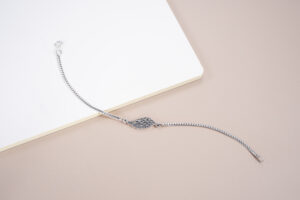
When it comes to getting a septum piercing, one of the most common questions people ask is, “How long does it take to heal?” The healing process can vary from person to person, depending on several factors such as skin sensitivity, aftercare routine, and overall health. Understanding what to expect during each stage of recovery will help you care for your new piercing properly and avoid unnecessary complications. 925
A septum piercing is done through the thin membrane of tissue located between your nostrils—known as the septum sweet spot. Because this area contains less cartilage and more soft tissue, it generally heals faster than many other piercings, as long as proper hygiene is maintained. However, patience is key; rushing to change jewelry or neglecting aftercare can extend the healing time.
Septum Piercing Healing Timeline
The Septum Piercing typically heals in two stages: surface healing and internal healing. While the outside may look fine after a few weeks, the inner tissue often takes longer to recover completely.
- Initial Healing (Weeks 1–3)
During the first few days after the piercing, you’ll likely experience mild swelling, tenderness, and watery eyes. This is the body’s natural reaction to a fresh wound. The piercing may feel sore when touched, especially if you move the jewelry. Avoid flipping or twisting the ring during this phase, as it can irritate the tissue and slow healing. - Intermediate Stage (Weeks 4–8)
By this time, the surface tissue begins to close and strengthen around the jewelry. Discomfort decreases, but internal healing continues. You can gently clean the area with saline solution twice a day. Even if the pain subsides, avoid changing jewelry too soon—doing so can reopen the wound. - Complete Healing (Up to 3–4 Months)
A fully healed septum piercing typically takes about 6 to 8 weeks on the outside and up to 3 or 4 months internally. Everyone’s body heals at a different pace, so listen to your body and give it time. If you have a slow healing rate or sensitive skin, it may take a little longer.
Signs Your Septum Piercing Is Healing Properly
There are several clear indicators that your septum piercing is healing the right way:
- Reduced redness and swelling after the first few weeks.
- Minimal tenderness when moving your facial muscles.
- No discharge or crust around the piercing site.
- The jewelry moves smoothly without pain or resistance.

Mild itching or dryness can occur near the end of the healing phase. This is normal and means your skin is regenerating. However, if you experience sharp pain, excessive swelling, or unusual discharge, consult your piercer or doctor.
Factors That Affect Healing Time
While the average healing period is around two to three months, certain factors can either speed up or delay recovery:
- Aftercare routine: Proper cleaning with saline solution and avoiding unnecessary touching ensures a smoother healing process.
- Jewelry material: Hypoallergenic metals like titanium and surgical steel are less likely to cause irritation.
- Lifestyle habits: Smoking, alcohol consumption, or lack of sleep can slow your body’s natural healing response.
- Infections or trauma: Accidentally bumping or pulling the jewelry can lead to irritation and prolonged healing.
- Overall health: A healthy immune system helps repair tissue faster, while chronic conditions may extend the healing time.
Aftercare Tips for Faster Healing
To promote quick and safe healing, follow these essential steps:
- Clean the piercing twice daily using sterile saline solution or sea salt water. Avoid alcohol or hydrogen peroxide as they can dry out the tissue.
- Do not touch the jewelry unnecessarily. Bacteria from your hands can lead to infection.
- Avoid makeup, lotions, or perfumes around the piercing area until it’s fully healed.
- Be gentle when washing your face or blowing your nose.
- Avoid swimming pools, hot tubs, and saunas for at least a month, as these environments may contain bacteria.
- Stay hydrated and eat nutritious foods to help your body repair tissue efficiently.
Consistency in aftercare makes a huge difference. Missing even a few cleaning sessions can cause buildup or irritation that prolongs the process.
Common Problems During Healing
Even with good care, minor issues can occur. Here are some of the most common problems during the healing phase and how to handle them:
- Crust buildup: This is normal and should be gently cleaned away with saline. Avoid picking it off.
- Mild swelling or tenderness: Use a cold compress for short periods to reduce discomfort.
- Irritation bumps: These can develop from friction or poor hygiene. Continue cleaning gently and avoid rotating the jewelry.
- Infection: If you notice yellow or green discharge, throbbing pain, or a fever, seek medical advice immediately.

When Can You Change Your Jewelry?
It’s tempting to swap out your jewelry for a new design, but patience pays off. You should wait until the piercing is completely healed—usually around 10 to 12 weeks—before making any changes. Replacing jewelry too early can tear the healing tissue and restart the recovery process.
When the time comes to change jewelry, have it done by a professional piercer. They can ensure proper hygiene and placement without risking damage to your piercing.
The healing process for septum piercing requires patience, care, and attention. On average, expect 6 to 8 weeks for the surface to heal and up to 3 months for full recovery. The process is relatively simple if you follow professional aftercare advice and keep the area clean.
Remember that healing times vary for everyone—your body knows best. By maintaining good hygiene and being mindful of your habits, your septum piercing will not only heal beautifully but also last for years to come. With the right care, it’s an easy, rewarding way to express your individuality while keeping your style safe and healthy.
